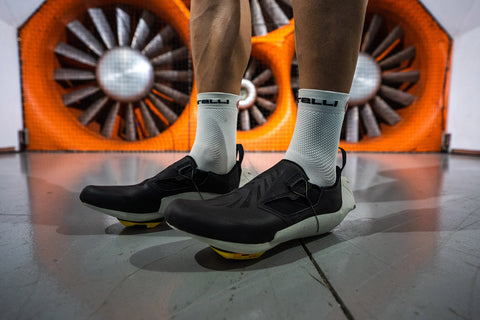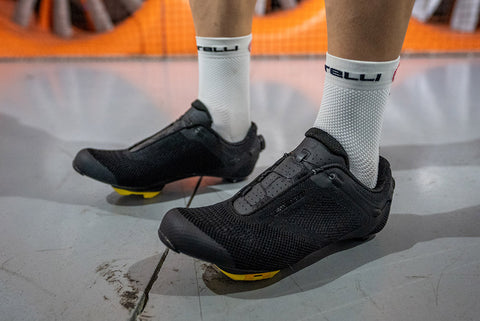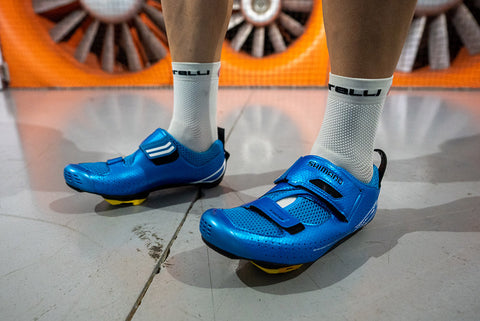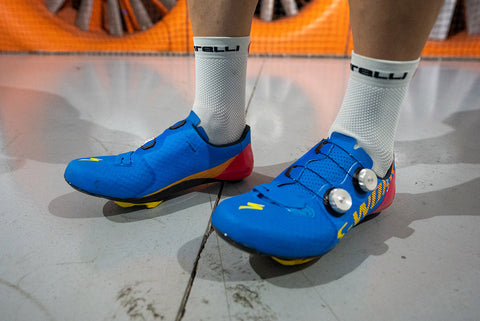Wind Tunnel Testing
Wind Tunnel Testing

Our goal in designing this shoe is not simply to make an aerodynamic shoe. It's to make the best triathlon/cycling shoe, and to include in the design process a real analytical effort to reduce aerodynamic drag, without compromising fit or function. I hope that even if one does not believe the aero data, or tests the shoe themselves and gets different results, they still decide that this is the shoe for them.I can truly say that this is the most comfortable cycling shoe I have ever worn. I can also say the materials and craftsmanship of the upper are top notch, as one would expect from an Italian factory that's been making shoes for 46 years.Like aero helmets, the aerodynamics of shoes is individual to the rider and there are lots of complicated non-intuitive things going on. Not everyone will experience the same thing. The results below are what we got for me mounted on a 2020 Felt IA Advanced. All that being said, given that this shoe is the only one in which real analytical tools were used during the design process to reduce aerodynamic drag, I think most riders have a good chance of seeing an improvement if they use this shoe.Testing was done at 30 mph. All shoes were size 44, but that does not mean they are actually the same size. The S-Works shoe was the smallest by quite a bit, giving it the lowest frontal area. It's possible that someone who prefers a 44 in the Bontrager might actually prefer a 44.5 in the S-Works - but maybe not. I was able to wear all shoes comfortably. Every effort was made to keep q-factor identical between shoes.
On October 30th we journeyed to the A2 Wind Tunnel in North Carolina to put the VeloVetta shoe to the test against a range of shoes cyclists and triathletes use to compete at the highest levels. The lineup included:

VeloVetta Prototype

Bontrager Ballista

Shimano TR-9

Specialized S-Works Road 7
Testing was conducted at an airspeed of 30mph from -12.5 to +12.5 degrees yaw.

The VeloVetta prototype had the lowest drag over virtually all yaw angles. When racing on a course with typical wind patterns, a rider at 30 mph using the other shoes will have to generate more power:
Shoe Extra Power Needed
VeloVetta 0
S-Works 7 Road 8.6 Watts
Bontrager Ballista 11.5 Watts
Shimano TR9 14.2 Watts
The results can also be used to determine how much faster a cyclist can complete a course vs. a different shoe at the same power:
40 km Time Trial
If a cyclist can complete a 40k time trial in 1 hour wearing the S-Works 7 Road Shoe, in the VeloVetta shoe they could complete the course 32 seconds faster at the same power.
Ironman
A triathlete who can complete the bike leg of an Ironman in 5 hours wearing the Shimano TR9 could complete the course
4 minutes and 20 seconds faster at the same power.
While the drag numbers in the chart above are dependent on speed, CdA is independent of speed and a lower CdA is beneficial to cyclists of all abilities:


